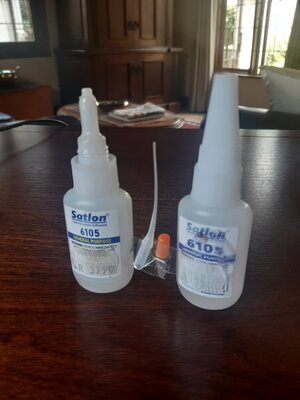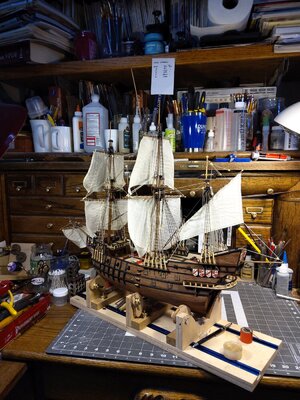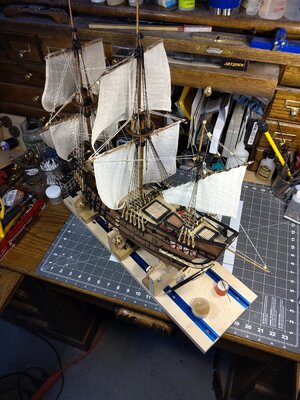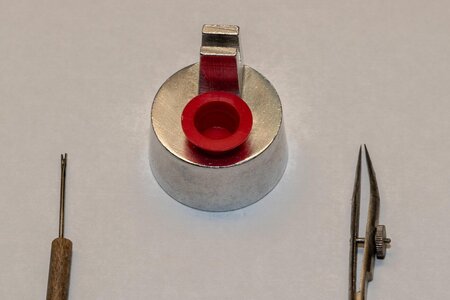- Joined
- Jul 23, 2021
- Messages
- 16
- Points
- 58

Th enclosed picture shows a small bottle of cyanacrilate glue, typically a thin type. I am not sure if this is available outside of South Africa, but the principle is the same. I used the long thin applicator originally, but was struck with clogging problems. The bottle on the right is new. The one on the left has been in use since December of last year, with the cap left off, exposing the hole, which is approx. 0.5 mm diameter. Open!! If the hole is smaller, such as when you screw on a (the) cap, the glue will bond with it, resulting in the clogging problem.
with it, resulting in the clogging problem.
So, one part of the solution is to leave the bottle open (and make sure it is in a stand of some sort, so that it doesn't tip over!). The hole is too large for the glue to clog - excess glue just runs back due to viscosity.
So how do you apply it without making a terrible mess? Tip the bottle and let a drop run out on a non-absorbant surface such as a piece of plate, top of a can, or whatever is convenient. Then use a strip of brass or tin or whatever is convenient, about 50 or 80 cm long, 2 mm wide, to pick up a droplet of glue to apply where necessary. The tip of this strip can be split to ensure more glue being picked up, but this is not exact science. Use whatever is convenient for you.
The main thing is that the glue bottle remains open, with the hole just large enough so that the dglue does not clog it.
Regards
Jan
 with it, resulting in the clogging problem.
with it, resulting in the clogging problem.So, one part of the solution is to leave the bottle open (and make sure it is in a stand of some sort, so that it doesn't tip over!). The hole is too large for the glue to clog - excess glue just runs back due to viscosity.
So how do you apply it without making a terrible mess? Tip the bottle and let a drop run out on a non-absorbant surface such as a piece of plate, top of a can, or whatever is convenient. Then use a strip of brass or tin or whatever is convenient, about 50 or 80 cm long, 2 mm wide, to pick up a droplet of glue to apply where necessary. The tip of this strip can be split to ensure more glue being picked up, but this is not exact science. Use whatever is convenient for you.
The main thing is that the glue bottle remains open, with the hole just large enough so that the dglue does not clog it.
Regards
Jan








